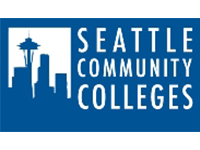Middle Jobs: America’s Job Market and What You Need to Succeed
•For the last several decades, completion of a four-year college degree has been a prominent symbol of success in America. Regardless of what you study or where you attend, personal and professional success has typically been measured by degree accumulation. Those who achieve college and professional degrees are promised a seat at the middle class table, if they want it.
I recently attended a panel discussion at the American Institutes for Research entitled, “Good Jobs Without a Bachelor’s Degree?” that turned that premise on its head.
The panel presented a picture of an evolving job market that increasingly values “middle-skill jobs,” which require some sort of higher education credential between a high school diploma and a four-year degree. Think technical certificates, associates degrees and industry-recognized credentials.
As our economy has sputtered along over the last few years, data is proving that a four-year degree is not as tightly linked to higher earning as it once was, and no longer guarantees access to the middle class job market. Unemployment among 20-29 year olds is 13.5%, compared to 8.5% among adults, and nearly half of college graduates are working jobs that don’t require a four-year degree. This statistic is startling, considering the financial burden young people increasingly take on to obtain degrees—supposedly their ticket out of crippling college debt. It is estimated that by 2020, 24% of jobs will require Bachelor’s Degrees, while 34% of jobs will require some sort of training and credential beyond a high school diploma, but not a four-year bachelor’s degree.
The growing “mismatch” between skills acquired through traditional higher education institutions and the skills needed to compete in and contribute to today’s workforce requires new partnerships and programs that are beginning to take shape across business, government and education sectors. Community colleges, workforce development programs and career and technical high schools are playing an increasingly vital role — partnering with businesses and industries to identity local and regional workforce needs and design programs that specifically prepare students to meet those needs. By solving the problem of “mismatch,” we can build a stronger middle class that promotes each student from high school and beyond with specific credentials, targeted training, high earnings and measurable outcomes.
As we adapt our programs on the ground to meet the realities of a new economy, we must also evolve our notion of success from collegiate affiliation to increasing middle class opportunities. We must reject the prejudice that exists in some quarters against “blue collar” jobs, advanced manufacturing and technical certificates. The fact is, thousands of good middle-skill jobs exist, some of which pay six-figures. These jobs require significant training and skills, provide job satisfaction and are able to support families. And we know that some U.S. employers cannot find enough workers in their labor markets for these excellent opportunities.
This is not to say a four-year degree is not a value achievement or asset or that we don’t need more young people to pursue college degrees at all levels, including master’s and doctorate degrees. It is and we do. But to succeed in today’s economy and truly live up to the mission of expanding opportunities for more Americans, we must allow and celebrate flexibility and creativity along the pathway to get there.








